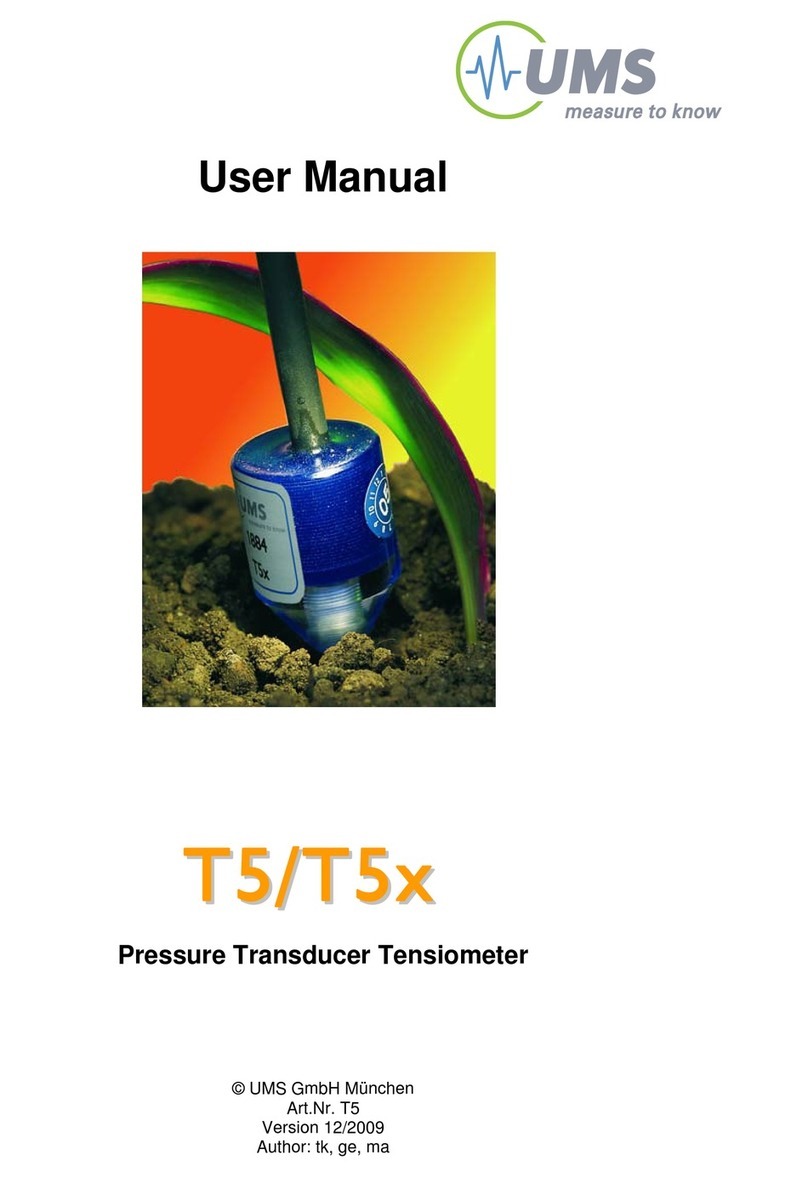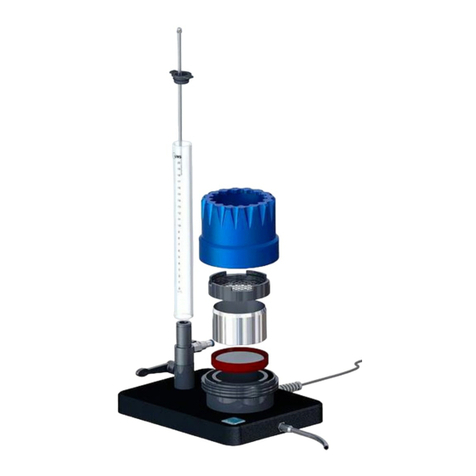1.7 Quick start guide
This chapter is only a summary of following chapters. Please read
the complete manual carefully before using the instrument.
In general, the T8 is filled and ready for installation when supplied.
1. Drilling the borehole:
Mark the required drilling depth on auger and on Tensiometer shaft.
Note: drilling depth = Installation depth / cos .
For installation from the soil surface, an installation angle of 25° to
65° from the vertical line is ideal for the optimal removal of air from
the cup (fig. a). For “horizontal” installation from a manhole the
borehole should point upwards in an angel of 5° (fig. b).
2. Slurrying the cup is only recommendable in clayey soils and only if
the bore hole is larger than 24 mm. In coarse sand or pebbly soils
fine pored slurry might create a water reservoir which slows down
the response. With the special Tensiometer gouge auger (article no.
TB-25) slurrying is unnecessary because of the accurate fitting of the
Tensiometer in the soil.
3. Take off the protective plastic bottle from the Tensiometer cup. Tilt
and pull the bottle off carefully. If necessary, carefully turn it counter-
clockwise!
4. Insert the T8 into the hole to the depth mark without using force.
In clayey soils a dangerous overpressure might
develop: Check the tensiometer's pressure reading
with an Infield measuring device or a data logger!
Important: Pay attention to the yellow sticker with
the dot on the shaft’s top end that marks the
position of the exit opening of the external filling
inside the cup:
a) Downwards installation: If the position of the cup
will be lower than the end of the shaft, the yellow
sticker must exactly face up!
b) Upwards installation: If the position of
the cup will be higher than the end of the
shaft, the yellow sticker must exactly face
down!






























